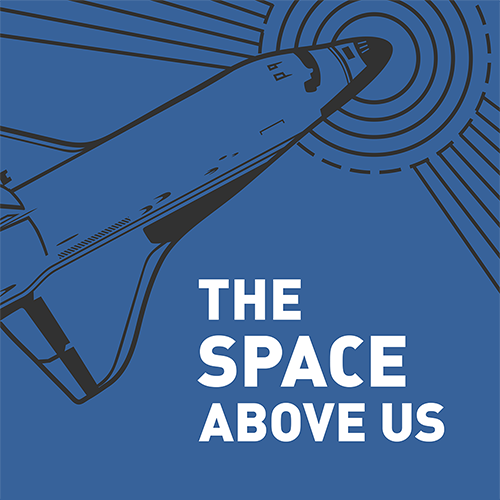Episode 166: STS-84 - Where Things Are Bright and Sunny (Linenger/Foale Swap)
Table of Contents
On STS-84 we’ll deliver Mike Foale to Mir and bring Jerry Linenger back to Earth. We’ll also wonder how much Elektron really weighs, enjoy the music in the base block, and contemplate the mystical powers of a shouting Marine.
Episode Audio #
Photos #
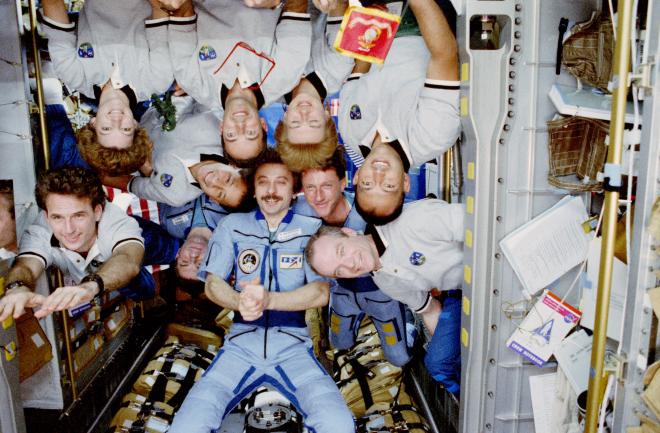
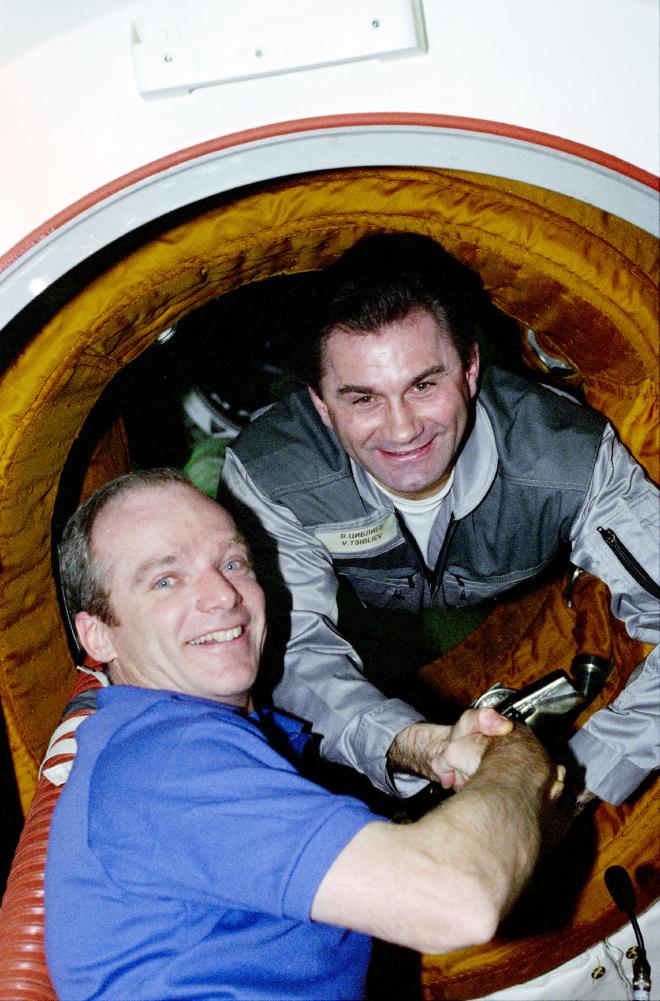
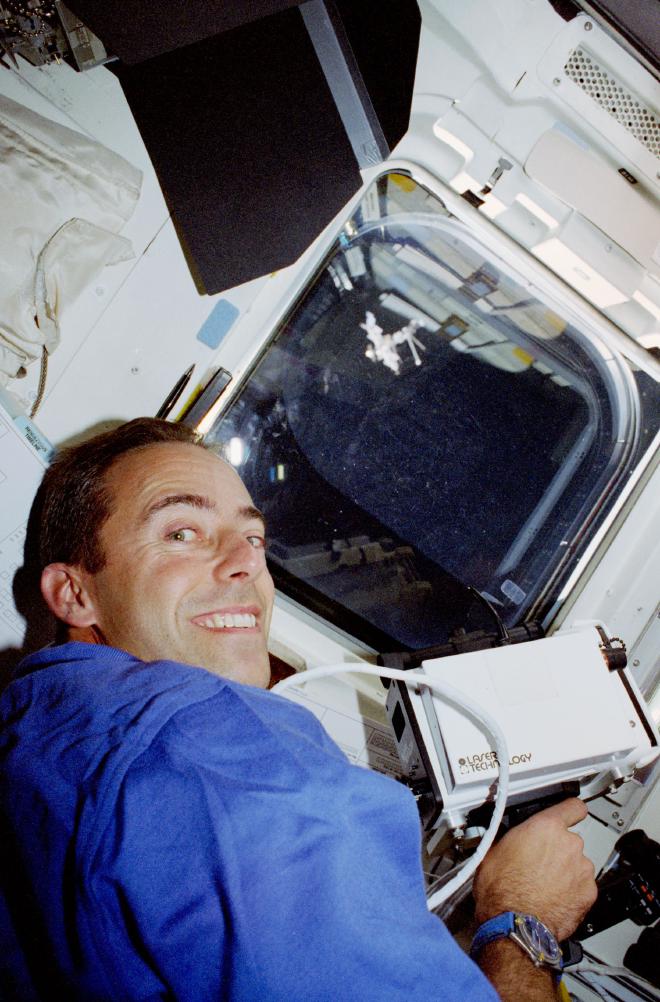
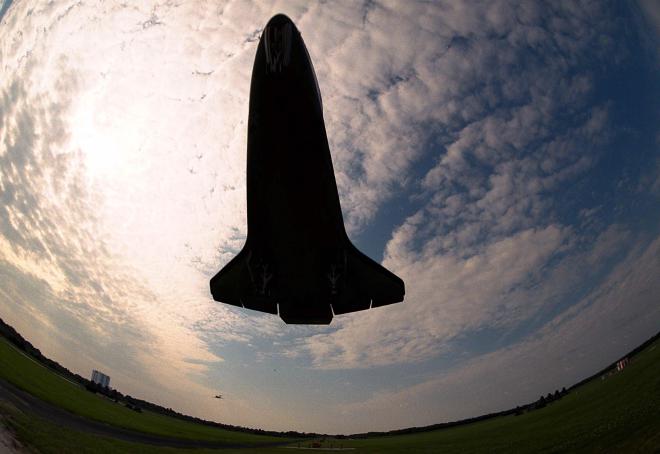
Post-Flight Presentation #
You can also see the mission in motion in the post-flight presentation:
Wake Up Calls #
Thanks again to TSAU listener broe91 for putting together a Spotify playlist of all the songs used as wakeup calls for the mission. This mission is a little more patriotic in nature than the last time we did this, but that’s still fun!
Transcript #
NOTE: This transcript was made by me just copying and pasting the script that I read to make the podcast. I often tweak the phrasing on the fly and then forget to update the script, so this is not guaranteed to align perfectly with the episode audio, but it should be pretty close. Also, since these are really only intended to be read by myself, I might use some funky punctuation to help remind myself how I want a sentence to flow, so don’t look to these as a grammar reference. If you notice any egregious transcription errors or notes to myself that I neglected to remove, feel free to let me know and I’ll fix it.
Hello, and welcome to The Space Above Us. Episode 166, Space Shuttle flight 84, STS-84: Where Things are Bright and Sunny
Last time, we covered the somewhat shorter than expected flight of STS-83. The crew of Space Shuttle Columbia had been all geared up for more than two weeks of materials science, but Fuel Cell 2 had different plans. After a few days of troubleshooting, the crew were forced to shut the fuel cell down, which committed them to a minimum duration flight, far short of their intended goal.
Someone who is not having a minimum duration flight, is NASA-4 astronaut Jerry Linenger. After arriving at the Russian space station Mir in January of 1997, Linenger has had an eventful few months orbiting the Earth. We covered all the twists and turns of his mission in episodes 162 and 163, so I won’t rehash it here. But suffice it to say that Linenger was very much looking forward to catching a ride home at the end of a mission that was, despite everything, successful.
And that brings us to today’s mission, STS-84. The primary goal will be to bring Linenger home and deliver his replacement, but we’ll also find a little room in the orbiter and time on the schedule for some bonus science. Let’s just hop right into it.
Commanding this flight, and riding in the left seat for the first time, was Charlie Precourt. Precourt became something of an expert at flying to Mir since the last time we saw him he was the pilot on STS-71, the first Shuttle-Mir docking. And we’ll actually see him one guiding the shuttle up Mir’s R-bar one more time a little bit down the road. This is his third of four flights.
Joining Precourt at the pointy end of the shuttle was today’s Pilot, Eileen Collins. When we last saw Collins, she was Piloting another Mir-related mission, STS-63, the “Near-Mir” flight. Today she’ll be traversing those last 10 meters and going all the way in for docking on this, her second of four flights.
Behind Collins we meet Mission Specialist 1: Jean-Francois Clervoy, sometimes known to the crew by the somewhat less fancy moniker “Billy Bob”. We last saw Clervoy a few years back on STS-66, the ATLAS-3 mission. While today’s flight is primarily about moving cargo and crew to and from Mir, there’s still quite a bit of science, and a lot of it is provided by the European Space Agency. So it makes sense that Clervoy, an ESA astronaut, would come along to get stuff done. This is his second of three flights.
In the middle of the flight deck we have Mission Specialist 2 and our first rookie of the flight, Carlos Noriega. Carlos Noriega was born on October 8th, 1959 in Lima, Peru, but he would tell you that he’s from Santa Clara, California. He earned a Bachelor’s degree in computer science from the University of Southern California, before heading off to the United States Marine Corps, who taught him how to fly. After a couple years flying the CH-46 Sea Knight helicopter around Hawaii, he served on two 6-month long shipboard deployments in the West Pacific and Indian Ocean. As part of that he supported peacekeeping operations in Beirut, Lebanon. After a couple more twists and turns he went back to California to pick up a Master’s in Space Systems Operations from the Naval Postgraduate School in Monterey, California. He was serving at the United States Space Command in Colorado Springs when NASA came calling in 1994. This his his first of two spaceflights.
Moving downstairs we find Mission Specialist 3 and our second rookie: Ed Lu. Edward Lu was born on July 1st, 1963 in Springfield, Massachusetts but somehow considers both Honolulu Hawaii and Webster, New York to be his hometowns. He earned a Bachelor’s Degree in Electrical Engineering from Cornell, and later a Doctorate in Applied Physics from Stanford. PhD in hand, he went on to work for the High Altitude Observatory in Boulder, Colorado, the joint Institute for Laboratory Astrophysics at the University of Colorado, and the Institute for Astronomy in Honolulu, Hawaii. Among other things, he advanced our knowledge of the basic physics that underlie solar flares. After he leaves our story he’ll go on to co-found the B612 Foundation, working to protect the Earth from asteroid impacts. But that will have to wait because this is only his first of three flights.
Also down on the middeck is Mission Specialist 4, Yelena Kondakova. This is actually Kondakova’s second flight, making her not a rookie, but since she’s new to NASA, we’ll take a quick look at her bio. Yelena Kondakova was born on March 30th, 1957 in Mitischi, near Moscow. After graduating from the Moscow Bauman High Technical College she went to work at RSC-Energia working on science and research. In 1989 she was selected as a cosmonaut, making her first flight as part of the Mir EO-17 crew from October 4th 1994 to March 22nd, 1995. So I’m not going to do the math on this one but I bet she’s racked up more time in space than the rest of her shuttle crew combined! The roominess of the middeck must have been a welcome change of pace after the cramped Soyuz on this, her second and final flight.
And finally, Mission Specialist 5, and Mir’s next long duration resident: Mike Foale. We know Foale from several flights already, but most recently from STS-63, where he and Eileen Collins got to within about 10 meters of Mir but left without docking. This time he’ll not only be docking, he’ll be staying on the other side of the hatch for the undocking, kicking off a wild multi-month stay on Mir that even Jerry Linenger would blanch at. This is his fourth of six flights.
Typically when things launch on the space shuttle there are years, or at least many months, of planning behind it. But sometimes the folks who prepared the orbiter and its payload for launch had to be flexible. Case in point: only six weeks before liftoff, STS-84 gained a new important payload: Elektron. Elektron is the system that Russia used on Mir to separate water into both hydrogen and oxygen. The hydrogen was vented and the oxygen was used to keep the crew alive. Lately, both Elektron systems on Mir were having a little trouble, forcing the crew to heavily depend on the solid fuel oxygen generators known as “candles”. These work fine, usually, but when they don’t, they can cause a big scary fire and nobody is a fan of that. So NASA agreed to rush a replacement Elektron up to Mir inside the SPACEHAB module nestled in Atlantis’ payload bay.
Russia quickly sent over a mockup of Elektron so personnel from the Kennedy Space Center and the contractor that made SPACEHAB could develop techniques to load the system into SPACEHAB and make sure that it would be properly secured. That went well enough, until eventually the real unit arrived and they discovered that the real thing was 21 kilograms, nearly 50 pounds, heavier than the mockup. Whoops. More scrambling ensued but eventually Elektron was securely fastened to the floor of the SPACEHAB module.
Fast forwarding to launch day, Atlantis sailed through a flawless countdown with no unplanned holds, lifting off right on time on May 15th, 1997 at 4:07 and 48 seconds AM, Eastern Daylight Time. The early mission went equally as smoothly, with the crew opening the payload bay doors, installing the center-line camera in the orbiter docking system, and extending the capture ring to ensure that all was working as expected.
Something else getting crew attention was the European Biorack module, which was stuffed full of eleven different experiments studying a wide range of topics. Just to give you a feel for what was on tap, there were experiments studying the cytoskeleton of lentil roots, how a particular type of single-celled organism formed in microgravity, and how microgravity affects how white blood cells communicate with other cells. And of course I would be remiss if I didn’t mention the experiment titled “Microgravity and signal transduction pathways in sea urchin sperm” which has taught me so much just from the title alone.
Also included on board was the Morphological Transition and Model Substance experiment, or MOMO. This was another experiment aiming to study the solidification process in metals, hoping to better understand the behavior of metal right at the boundary between liquid and solid. In this case, instead of a metal, they were using a substitute material that was expected to behave similarly but that had the added benefit of being transparent, allowing for thousands of photos to be taken of the process. So plenty of science was still getting done on this flight, despite its primary focus on delivering and retrieving crew and cargo.
Before long Mir became visible as a bright spot on the horizon, getting brighter and brighter and soon growing from a point of light to the collection of modules and gangly appendages that we all know and love. In his book, Linenger described pressing his nose to the window, watching Atlantis arrive, and shooting photo after photo of the orbiter approaching. Commander Precourt and Pilot Collins executed the standard R-bar approach, and less than 43 hours into the flight, Atlantis docked with Mir for the sixth time.
Once the pressure equalized, the hatches were opened, and Commanders Precourt and Tsibliyev shook hands. And actually, I have an interesting side note about this. Apparently in Russian culture it’s considered bad luck to shake hands across the threshold of a doorway, with the preference being to step entirely outside or inside first. I like to imagine that the root of this tradition is someone bellowing from inside the house that the hand-shakers are letting all the heat out, but I have no idea. When asked about this tradition and the fact that shuttle and Mir commanders always started out docked operations with a handshake across the hatch, Commander Precourt explained why it was OK. He had actually asked the Russians themselves, and found that somehow they had concluded that a hatch is not a door, so it’s fine. Good to know.
Along with the handshake, the shuttle crew presented Tsibliyev and Lazutkin with baseball hats sporting the STS-84 mission patch, as well as the traditional gift of bread, tea, and salt. After a quick get together in the base block, the cargo transfer could begin.
Among the most first items to be transferred was Mike Foale’s Soyuz seat liner, which once verified to fit properly, allowed Foale to transition to the Mir crew, and Linenger to transition to the shuttle crew. As Linenger joined the STS-84 crew, they apparently thought he looked a little haggard. Between the lack of sunlight and the fact that the combination hair trimmer slash vacuum on Mir was broken, Linenger was looking a little worse for wear. Clervoy actually offered to give Linenger a haircut, and Linenger initially agreed, figuring letting a French person cut his hair would guarantee some style. But Collins commented that she thought it gave Linenger a sort of Robinson Crusoe look. Robinson Crusoe, of course, being the fictional explorer who spent nearly 30 years stranded on a desert island. This apparently appealed to Linenger, who decided to pass on the haircut.
Other critical cargo included the new Elektron and a new gyrodine, which create oxygen and help orient the space station, respectfully. Along with the Elektron and gyrodine was a fresh dewar of crystals to replace the one that they’d be bringing home, the new sample freezer, science equipment, food and logistics equipment, and of course, around half a ton of water. By the end of docked-day-two the crew had already worked through nearly 60% of their tasks, almost a whole day ahead of schedule.
As the days ticked by, the shuttle crew got a little taste of what life aboard Mir was like. Collins commented that she enjoyed the base block the most since it was a little warmer, always had the lights on, and there was always some Russian folk music playing. Though Linenger did note that the STS-84 crew wasn’t quite getting the full Mir experience. For one thing, there were far fewer master alarms than he had grown accustomed to. The reason for that was that for the duration of the shuttle’s stay, Atlantis would be responsible for maintaining the onboard atmosphere. Ventilation ducts snaked their way through the docking module into the Russian space station, allowing the crew to leave the dreaded candles for another day. Linenger also noted that the Russian crew had been strenuously ordered to make sure that the station was as clean and presentable as possible in anticipation of Atlantis’ arrival. They wanted to make a good impression both on the American crew as well as the eyes of viewers at home, watching any one of several press conferences done throughout the week. Filters were cleaned, clutter was tucked behind panels, and numerous bulky items were all gathered in Kvant-1, leaving more room in the rest of the station.
When the new Elektron was transferred to Mir, the original plan was to test it out while the shuttle was still there. I’ve seen sources switch back and forth between where the new one was installed, but we’re going to go with the official shuttle status report, which stated that the new Elektron was headed to Kvant-1, where it would serve as a backup to the existing one that was running in Kvant-2. That makes sense to me because the test of the new system while the shuttle was there was canceled due to the ongoing trouble with coolant leaks in Kvant-1.
Those coolant leaks also complicated an impromptu request by the Russians to help vent some extra water. I’m not entirely sure why this was a goal, considering that we just spent all this effort bringing around 500 kilograms of water up to Mir, but the Russians had around 270 kilograms of water that condensed inside the station and they wanted to get rid of it. If I understand correctly, they wanted to bring it over to the shuttle in bags and then hook it into the shuttle systems to vent overboard. NASA ended up declining the request because it was a little too last minute. No one was sure what the exact procedures would be and what contaminants might be in the water, such as the ethylene glycol coolant. The last thing Mission Control wanted to do was end up with a shuttle crew dealing with a broken bag full of contaminated water floating around the middeck. Maybe next time.
I thought this was interesting because while I don’t know all the details about how this would work, my first reaction was that NASA was overthinking things and being a little overly cautious. But literally my next thought was “spaceflight will never tolerate carelessness, incapacity, and neglect.” Moving hundreds of pounds of possibly contaminated water isn’t something that should be done without thinking it through ahead of time if there isn’t a pressing reason to do so. So this was probably a good call.
Of course, over the five days of docked operations, the crews managed to have a little fun together. Clervoy and Linenger played a weightless game of catch down on the middeck using a big wadded up ball of duct tape, which made me realize that if I ever get to go to space I want to bring a super ball and just bounce it off the walls.
The combined crew also got together for a big feast. This was actually something that Commander Charlie Precourt had strongly advocated for. He insisted on a two hour window where no work was scheduled and where both mission controls would leaves the crews alone. In those two hours, they enjoyed food that represented the wide variety of cultural backgrounds of the ten person crew. They even printed menus with descriptions of the different foods available, of course in both English and Russian. I don’t have a full listing of the menu, but I know there was food from Russia, France, China, Peru, and England. Commander Precourt brought some authentic Texas barbecue, which joined the food from the other countries as well as apples, oranges, chocolates, foie gras, bread, salt, tea, and pretzels. And to top it all off, they had some ice cream that made the ride uphill in a new experiment sample freezer.
And clearly the crews got along well. I’m not sure when in the flight this happened, but Mir Commander Tsibliyev gifted Shuttle Commander Precourt with an EVA glove and one of the activation rings pulled from a fire extinguisher. These gifts sort of made me laugh because first, don’t they need that EVA glove? But second, the ring made me laugh because by Precourt’s estimate, Tsibliyev had something like seventeen of those fire extinguisher rings. Which drives home just how serious the fire had been, but is also just so ridiculous to me. In an oral history interview, Precourt said that the EVA glove remains proudly displayed in his living room.
And I can see why the Russians liked Precourt. For one thing, he spoke Russian. But he also had a lot of nice things to say about Mir. In his mind, the American press had not been completely fair to the Russian space station. A computer failure on Mir might be loudly announced and decried in the American press, despite actually being not too big a deal. Precourt recalled being docked to Mir on STS-71 and having to wake up at 2 in the morning to deal with a computer failure on Atlantis that somehow failed to draw the same amount of scrutiny.
Plus, as he points out, having systems fail was sort of the point of Mir. This was a long duration mission. And on a long duration mission, it was advantageous to design systems such that a system could be run right until its failure point without causing a major crisis. And then more often than not, it could simply be repaired on site. When humans are living on Mars, quickly shipping up a new replacement unit won’t be an option. It’s important to develop the capability to live with and repair failing systems without relying on the ground.
I think Precourt has a really good point here, but I also think it’s possible that maybe Mir was maybe learning a few too many of these lessons by this point. But the point still stands.
Of course, among the most important activities taking place during docked operations was the knowledge dump from Linenger to Foale. Just like Blaha had done for him, Linenger spent hour after hour showing Foale around and letting him know what to actually expect on the station. He insisted that Foale physically show him that he knew how to find and use the respirators and fire extinguishers, as well as making his way to the Soyuz in case a quick escape was required. Blaha’s advice had helped Linenger get through a mission that was far more challenging that he had originally expected. And we’ll get to it soon enough, but Foale is going to face plenty of challenges on his own in the months to come. So this knowledge transfer was critical.
Linenger had grown used to life on Mir, and the contrast he experienced when Space Shuttle Atlantis finally arrived was pretty striking. This is sort of a long quote but I’m just gonna read the whole thing. He said, quote “After being accustomed to living on the Mir station - knowing the dark crevices, the smells, and the sort of cramped nature of it - the shuttle was almost brilliant white. It was organized like I’ve never seen anything organized. Everything was in its place, everything was clean, sparkling, sterile almost. It’s pretty close to coming out of a cave into the sunshine. Mir did its job, but it was an outpost up there. It had been up there for a lot of years, and it had its wear and tear. Moving from that cave into the shuttle made me feel I was heading back to the real world of Earth, where things are bright and sunny.”
As the undocking approached, Linenger spoke with Tsibliyev and Lazutkin and told them that he had been proud to serve with them, and he wished them luck for the remainder of their mission. They still had a month left to go, but he was headed home.
Just a little over five days after docking, the STS-84 crew flipped the right switches, the latches retracted, springs extended, and Space Shuttle Atlantis began to back away. Today’s departure would be a little different from the last few. In lieu of the usual flyaround, Atlantis would simply be backing away while testing a new sensor for the ATV, the planned European servicing vehicle for the ISS. I believe they just moved down the R-bar, in a reverse of their approach, but actually couldn’t find anything to confirm this. In any case, they paused their departure at a range of 27 meters, 90 meters, and finally 460 meters, giving the European sensor a chance to get a good look at Mir. The sensor actually worked great, giving good readings all the way out to 750 meters. It was slightly weaker than expected due to one reflector having a little higher reflectivity than another, but hey, that’s what tests are for. Once Atlantis reached a range of 900 meters, the crew departed the R-bar, allowing the natural relative motion to do its thing, with the now-lower Atlantis flying ahead in its orbit.
In between undocking and reentry, the crew continued working on the onboard science experiments, maintaining the orbiter, and maintaining their own bodies. Linenger used a treadmill on SPACEHAB to continue his lengthy daily exercise routine, determined to keep his cardiovascular system as prepared as possible for gravity. Linenger’s efforts also helped engineers learn more about how the treadmill performed in orbit and in such close quarters. Among other things, the noise level of the device was being checked. If you’re curious, up at the ear level of the runner, it clocked in at 87 decibels, which is reasonably loud, somewhere around the level of a hairdryer, truck, or lawnmower, depending on who you ask.
When reentry day arrived, the crew encountered a couple of minor problems, one which was easy to fix, and one which no one can fix. The first issue was that since Linenger was returning from such a long duration stay in weightlessness, his seat would be mounted with its back on the floor, essentially allowing him to go through reentry while lying down. On top of that, a middeck locker was cleared so for him to stick his feet in, raising his legs up and further making things easier on his heart. The trouble was that the seats on this flight were an upgraded version that was lighter weight, and it turned out they weren’t quite up to spec. When the crew tried to line the seat up with the rails on the floor and insert the retaining pins, they found it just wouldn’t line up properly. The angle was just a little bit off. No problem though. One crew member stood on top of the seat back while pushing down from the ceiling, forcing it into position, while others slipped the pins in. Good enough! In the future, the out of spec chair would be used for the pilot and commander, since their seats stay in the upright position all the time.
The other problem, which was a lot harder to fix, was the Florida weather, requiring one more trip around the world. The second time was the charm though and Atlantis burned its OMS engines and began the descent back into the atmosphere. It passed over the entire continental United States, from Northwest to Southeast, literally crossing from sea to shining sea in the process. Atlantis touched down at the Kennedy Space Center and rolled to a stop, concluding a successful mission lasting 9 days, 5 hours, 19 minutes, and 56 seconds.
But while the mission was over, the crew weren’t quite done yet. Jerry Linenger could feel the G forces mounting during reentry and now had to try to move in it. Well, “had to” is a strong word since a stretcher was standing by to carry him off the orbiter if necessary. Moving in gravity after months in space is no joke. The rest of the crew actually practiced evacuation procedures with a Linenger-weight dummy just in case the worst case scenario happened and the crew had to bail out. But Linenger was determined to walk out under his own power. He joked that if he had trouble, he’d just have his crewmate Carlos Noriega use his US Marine powers and scream at him. Well it turns out neither the stretcher nor Noriega’s yelling power were necessary. It was a little slow and shuffling, but after more than 130 days in space, Jerry Linenger walked off Atlantis, and back into life on Earth, where things are bright and sunny.
Next time.. we’ll crash the party and join Mike Foale for his long duration stint on Mir. You’re not going to want to miss this one.. it’s a story that will threaten to take your breath away!
Ad Astra, catch you on the next pass.
